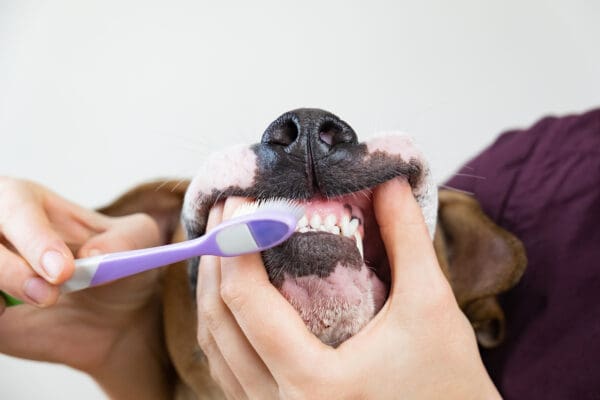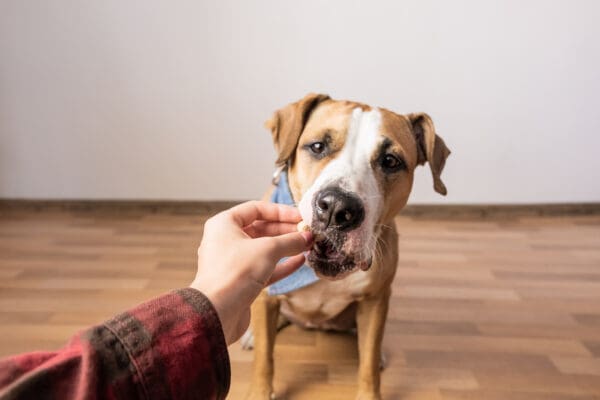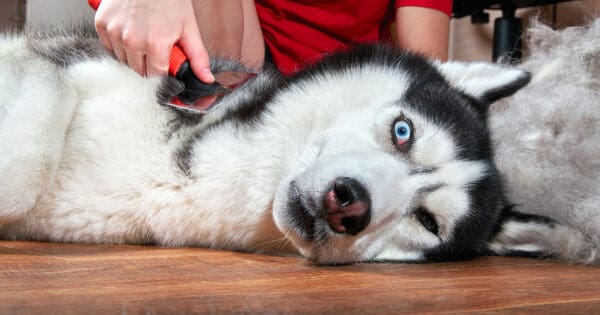Hi, Finley here,
Winter is upon us, and you don’t need me to tell you that it just keeps getting colder! That much is obvious, but what doesn’t seem to be obvious to some humans is how dogs are (and are not) equipped to deal with winter weather. Let’s talk!
If it’s too cold for you to sleep outside, it’s too cold for us!
I wish I didn’t have to say this, but I do. If it’s too cold for you to be outside for a long time, it’s too cold for a dog. While some heavy coated dogs like huskies and malamutes are better suited to handle the cold, the fact is that dogs are not meant to be out in the cold or snow for extended periods of time.
Just like you, cold exposure can cause lots of problems for us. First of all, our noses, paws, ears and bellies have little to no protection from cold and can be prone to frostbite. There are also lots of chemicals like anti-freeze or rock salt around the outside of a house that mix with snow and then get on our fur. Because we like to lick, we could ingest these nasty things. Be sure to towel us off really well and warm us up when we come inside. Frostbite often goes along with hypothermia. While toy breeds, short-coated breeds, puppies and old dogs are the most at risk for hypothermia, if any kind of dog’s coat becomes wet, it loses all of its insulating qualities. Like humans, if your clothes become wet, they just make you colder.
Once we get cold, we start burning up all of our stored energy, which can also result in low blood sugar. That’s why it’s a good idea to slightly increase our food if we spend a lot of time exercising outside.
Kind of like in the summer, when the weather is extremely hot or cold, we should never be left in the car. Think about it… the car doesn’t retain heat, and can quickly become just as cold as it is outside. We also can’t move around a lot to keep ourselves warm when we wait in the car, and this is sadly a perfect recipe for freezing.
Grooming in the Winter
Extreme temperatures tend to make lots of us get dry, itchy skin. Try not to bathe us too often. I know you humans usually feel a lot better when you wash your skin and hair, but frequent baths tend to make our skin worse. Supplements for Omega-3 fatty acids can help a lot! They usually take 3-4 months to start making a real difference, so if you notice your dog usually gets dry skin in the winter, either give them year round or start a routine in the fall to get ahead of it. Talk to your vet about what the proper dosage would be for your dog.
To Wear a Sweater, or to Not Wear a Sweater… That is the question!
Some people cringe at the thought of dogs wearing clothes. Rightfully so, some of the time. Large dogs, particularly ones who have naturally thick or insulating coats, are usually not great candidates for coats or sweaters. Think about how you tend to get overheated when you exercise in lots of layers, even when it’s cold! That being said, there are lots of dogs that do benefit from a little extra protection from the elements. Rain gear or sweaters can make going outside much more enjoyable for short or thin coated dogs of all sizes. But, if your dog is not comfortable wearing clothes, skip the long walks and opt for either indoor games or short bursts of outside time.
In the end, the golden rule of winter is that if you’re too cold, we’re too cold. Remember this, and we’ll all have a happy and safe season!
Til Next Time,
Finley
Executive Canine Quality Control Officer



